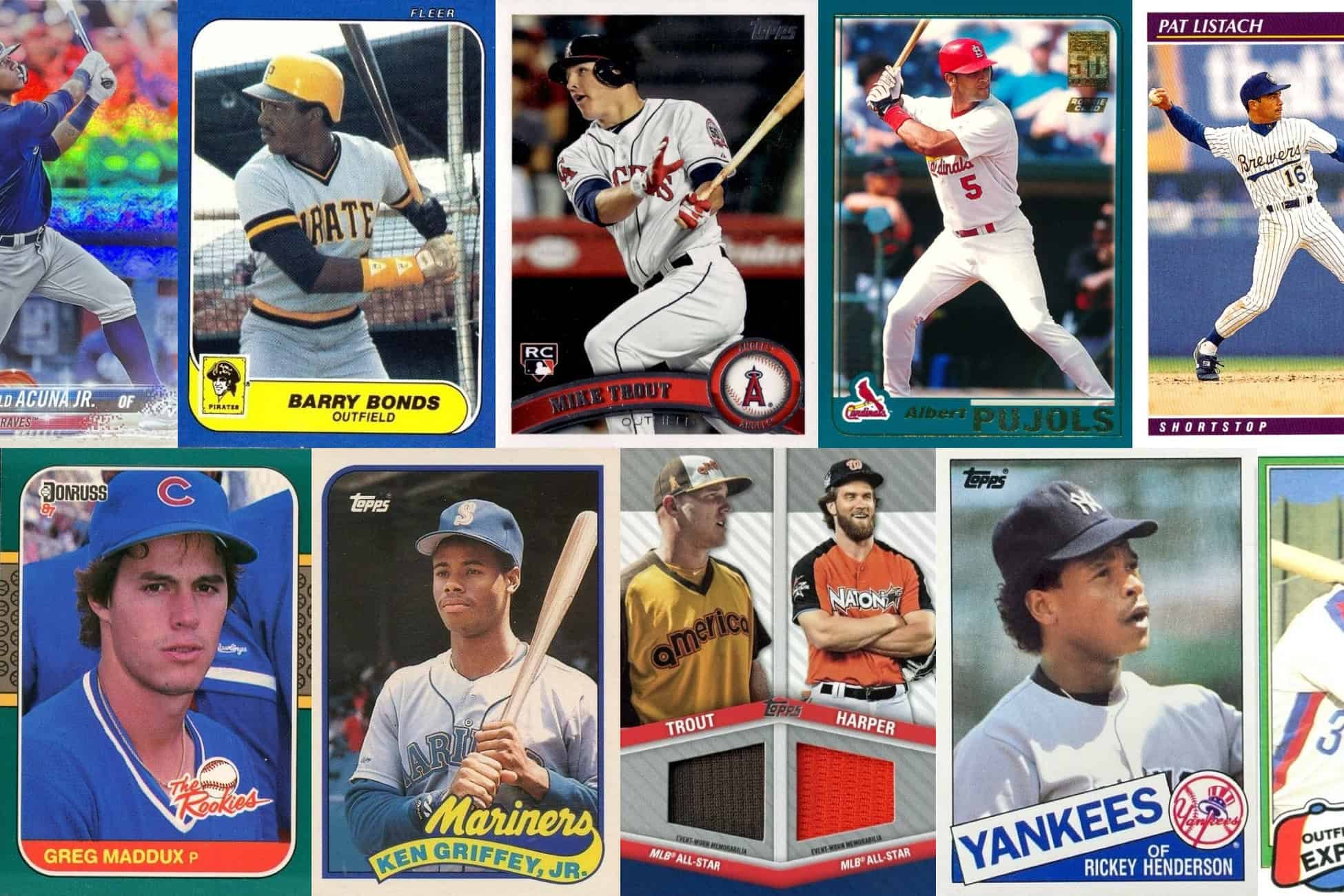Traded and update baseball cards play a crucial role in keeping card sets relevant as the baseball season unfolds. Unlike standard releases that come out before Opening Day, these supplemental sets capture the ever-changing landscape of the league. They highlight player trades, mid-season call-ups, and other developments that occur after the base set hits shelves. Whether it’s a veteran in a new uniform or a rookie making a splash, these cards help collectors stay in step with the current state of the game.
Over the years, traded and update sets have earned a reputation for featuring some of the hobby’s most coveted rookie cards and for providing fresh context to a player’s season. In this article, we’ll break down what these sets are, explore how and why they originated, look at their advantages for collectors, and spotlight a few of the most iconic and valuable examples to ever come from these releases.
What Are Traded & Update Baseball Cards?
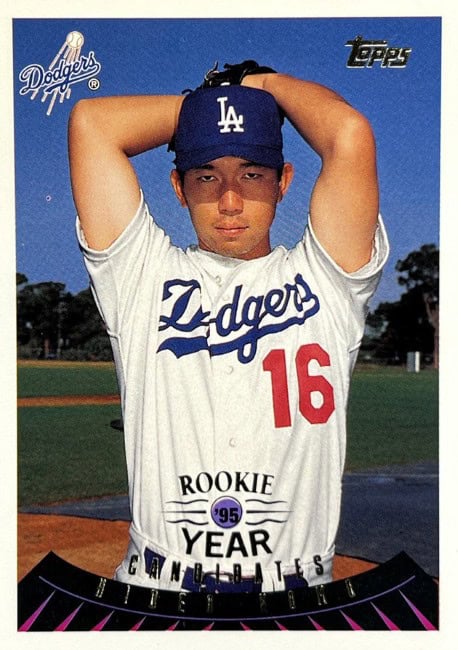
Traded or update baseball cards refer to supplementary sets released after the main flagship set. Their primary purpose is to reflect roster changes and emerging players that were not part of the original release. Typically, update or traded sets are released late in the baseball season – usually around October or November. This timing allows the card companies to:
- Include players traded before the July 31 deadline
- Feature September call-ups or notable rookies
- Capture mid-season breakout performances
- Highlight All-Star Game participants and stats
Releasing the set at this time also serves to bridge the collecting gap between the end of the regular season and the beginning of the next card season in the spring.
The term “Traded” was more commonly used during the 1980s and 1990s (e.g., “Topps Traded”). Later, “Update” became the modern naming convention (e.g., “Topps Update Series”). These cards are not a new base set; they’re an extension or supplement to it.
When Did Traded & Update Cards Start?

Baseball card companies began producing what are now known as “Traded” or “Update” sets in the mid-1970s, with Topps being the first major company to do so.
Topps included a small 44-card “Traded” set within the later print runs of their regular 1974 set. These cards featured players who had been traded or were notable rookies who didn’t appear in the main set. This is generally considered the first instance of a Traded/Update type of subset. Topps repeated this practice with another small Traded insert within their main set.
While the concept of updating card sets mid-season existed earlier, the practice became formalized in the early 1980s. The first widely recognized traded set was the 1981 Topps Traded set. It was a 132-card box set sold separately from the regular Topps set and included players who had been traded during the season or were new call-ups.
Topps released another traded set in 1982 and continued the tradition throughout the decade. Other companies followed suit. Fleer issued “Update” sets, and Donruss created its own late-season offerings (like the Donruss “The Rookies” sets). These releases became staples for collectors who wanted complete seasonal representation.
In the 2000s, Topps rebranded its traded set as the “Update Series,” beginning with 2005 Topps Update. These were released as part of pack-based products instead of being sold exclusively in factory sets.
What Do Traded and Update Cards Signify?
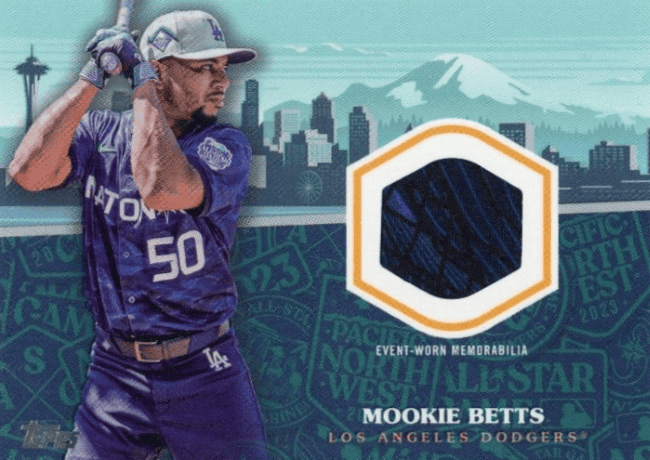
Traded and update cards have become key touch points for:
Player Trades and New Teams: One of the most common reasons for a player appearing in a traded/update set is a mid-season trade. A player who starts the season with one team but finishes it with another will often be featured in the update set wearing their new team’s uniform.
Rookie Card Debuts: Because the base set is often finalized before the season starts, top rookies who are called up mid-season usually aren’t included in the main release. Traded or update sets give card companies the chance to include these players, often creating their true rookie cards.
Missed Players: Sometimes, notable players are omitted from the main flagship set for various reasons—timing, oversight, or contractual issues. Update sets provide a second chance to include them.
Special Events and Highlights: Modern update sets also include cards for All-Star Game participants, Home Run Derby entries, postseason highlights, and other special events that occur after the base set’s production.
Benefits of Traded or Update Baseball Cards
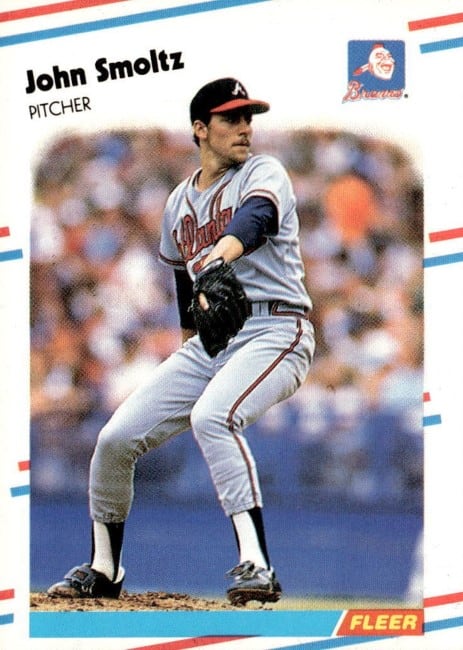
Traded or update baseball cards offer several advantages that enhance both the collecting and investing experience. For starters, they allow collectors to complete a season’s story. A base set might miss out on late-debuting rookies or key trade acquisitions, but the update set fills in those gaps. This provides a fuller, more accurate picture of the baseball year.
One of the biggest draws of traded or update sets is the inclusion of true rookie cards. Since many top prospects are called up during the season, their first appearance in a licensed set often comes in an update series.
Collectors also appreciate seeing players in the correct uniforms after being traded. Rather than owning a card of a player in the wrong jersey for that season, a traded card displays the updated look and team. It adds realism and completeness to collections.
From an investment perspective, update cards can hold significant value. Rookie cards of players who go on to become stars tend to increase in price, especially if they’re only available in the update or traded series. As with Trout or Ichiro, update sets can become a gold mine for those chasing future Hall of Famers.
Finally, set builders benefit from traded/update releases as they serve as the final chapter in the annual collection journey. These sets round out the year, offering closure and completeness for dedicated collectors.
Famous Traded & Update Baseball Cards
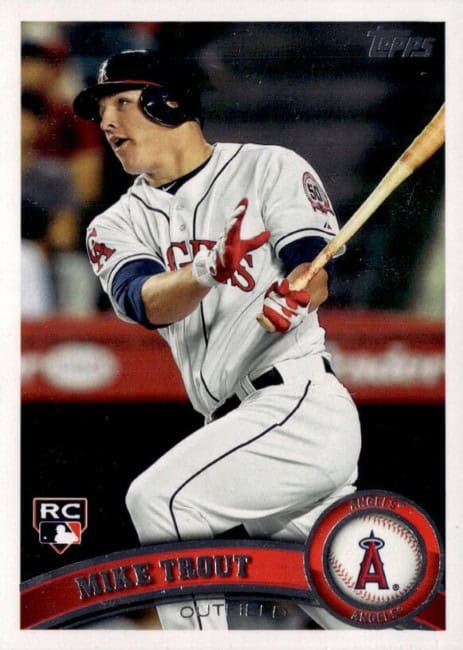
Over the years, traded and update sets have produced some of the most memorable and valuable cards in the hobby. These late-season releases often serve as the first official cardboard appearance for future stars, or they offer collectors a glimpse of beloved players in new uniforms. Certain cards from these sets have become icons in their own right. Let’s take a closer look at some of the most famous traded and update baseball cards ever released.
- 1982 Topps Traded Cal Ripken Jr. #98T: Ripken’s regular 1982 Topps card is part of a three-player rookie card, but the traded version gives him a solo spotlight. It’s widely considered his most desirable rookie card.
- 1984 Fleer Update Roger Clemens #U-27 and Kirby Puckett #U-93: This was Fleer’s first true update set, and it was loaded with future stars. Both Clemens and Puckett’s cards have become valuable and iconic, especially in high grades.
- 1987 Topps Traded Greg Maddux #70T: Another significant rookie card from the Topps Traded series, featuring Hall of Famer Greg Maddux. His inclusion in the Donruss Rookies set, which is also a traded series, is also popular.
- 2001 Topps Traded Albert Pujols #T247: While Pujols’s Traded release is overshadowed by his true rookie in the 2001 Bowman Chrome set, as he grows closer to his inevitable Hall of Fame induction, all of his rookie cards are gaining popularity.
- 2011 Topps Update Mike Trout #US175: Arguably the most famous modern baseball card. This is Trout’s true rookie card (not his high-value prospect card) and commands high prices across all grading levels. Its inclusion in the Update set solidified the importance of late-season releases.
The Evolution of Traded & Update Sets
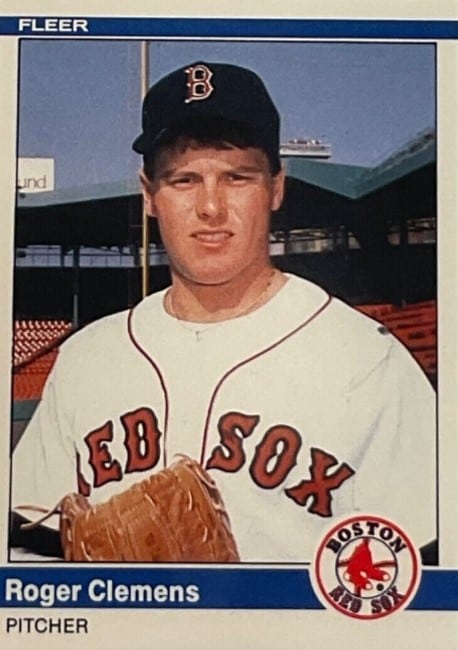
Over time, the delivery of traded and update content has changed. What started as exclusive box sets in the 1980s evolved into widely distributed retail and hobby products. Today’s Topps Update Series is released in packs, boxes, blasters, and mega boxes. These mirror the formats of the main flagship series. Today, a Topps Update card is indistinguishable from Series 1 and Series 2 cards, except for the “US” prefix on the back.
Beyond packaging, the contents of these sets have also evolved. While early traded sets primarily consisted of base cards, modern update releases often include autographs, serial-numbered parallels, short prints, and various inserts. These additions have helped boost the popularity and collectibility of update series products, making them exciting for both seasoned collectors and newcomers.
In addition, the significance of the update series has grown in the modern card market. In some years, the most sought-after rookie cards come from the Update Series rather than the flagship sets. This shift has made collectors more attuned to the fall releases, with some even prioritizing Update Series boxes for investment purposes. The evolution reflects not only changing production methods but also how collecting habits have developed with time.
Traded vs. Update: Is There a Difference?

While many collectors use the terms “traded” and “update” interchangeably, there are subtle but meaningful differences rooted in how the products have evolved over time. The distinction largely comes down to format, branding, and era.
Traded sets, most popular from the early 1980s through the early 2000s, were typically released as factory-sealed box sets. These sets were not sold in packs but as complete collections, often including 132 cards. The cards were numbered separately from the flagship series. They’re marked with a “T” suffix – for example, 1987 Topps Traded Greg Maddux #70T. These sets were geared toward collectors who wanted a concise, season-ending add-on to their main set.
By contrast, Update sets became the norm starting in 2005 with the introduction of the “Topps Update Series.” Unlike their boxed predecessors, update cards were now released in packs across hobby shops and retail stores. Rather than having a standalone numbering system, they continued the numbering sequence from the main flagship set. For example, the 2011 Topps Update Mike Trout card is #US175, following Series 2. This shift reflected changes in collector habits and a growing demand for pack-based content that could include inserts, parallels, and autographs.
In practice, both formats serve the same essential function—updating the season’s player movement and highlighting late-year debuts. Still, understanding the differences can help collectors identify a card’s origin and appreciate the product’s evolution over the decades.
Collectors may refer to either format as “update” or “traded,” but understanding the historical distinction helps navigate the terminology.
Conclusion: A Vital Part of the Hobby
Traded and update baseball cards play a critical role in documenting each MLB season. They offer collectors a way to stay current with player movement, highlight important rookie debuts, and round out complete seasonal sets. From Cal Ripken Jr. to Mike Trout, some of the most iconic cards in the hobby have come from these late-season additions.
Whether you’re a rookie collector or a seasoned veteran, understanding the importance of traded and update cards will deepen your appreciation of the hobby. With exciting releases each year, they remain an integral and evolving part of baseball card collecting.
